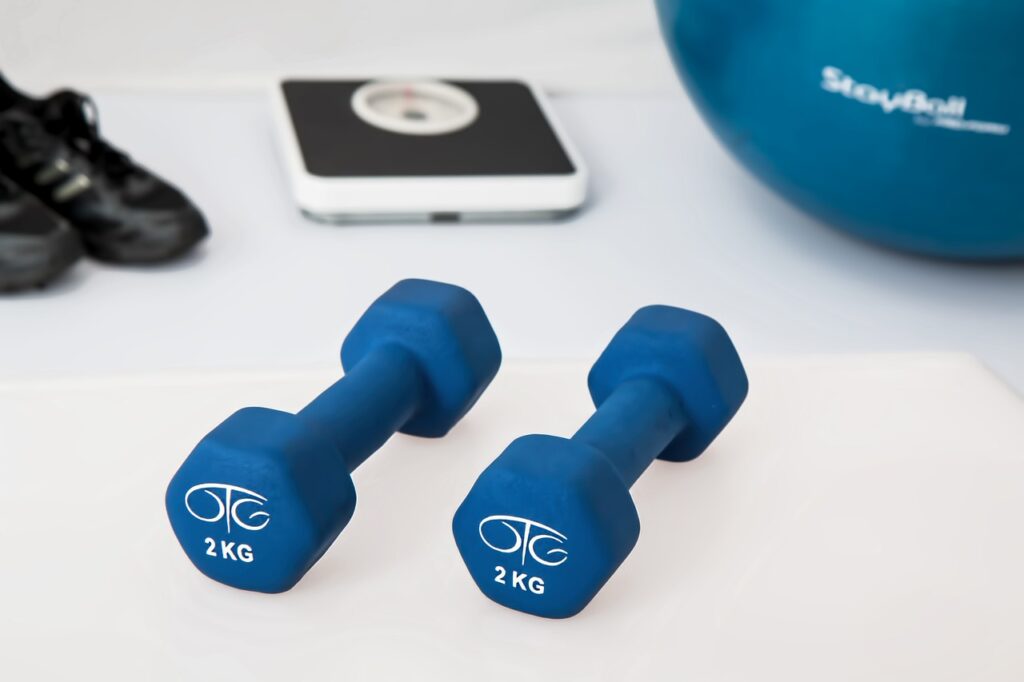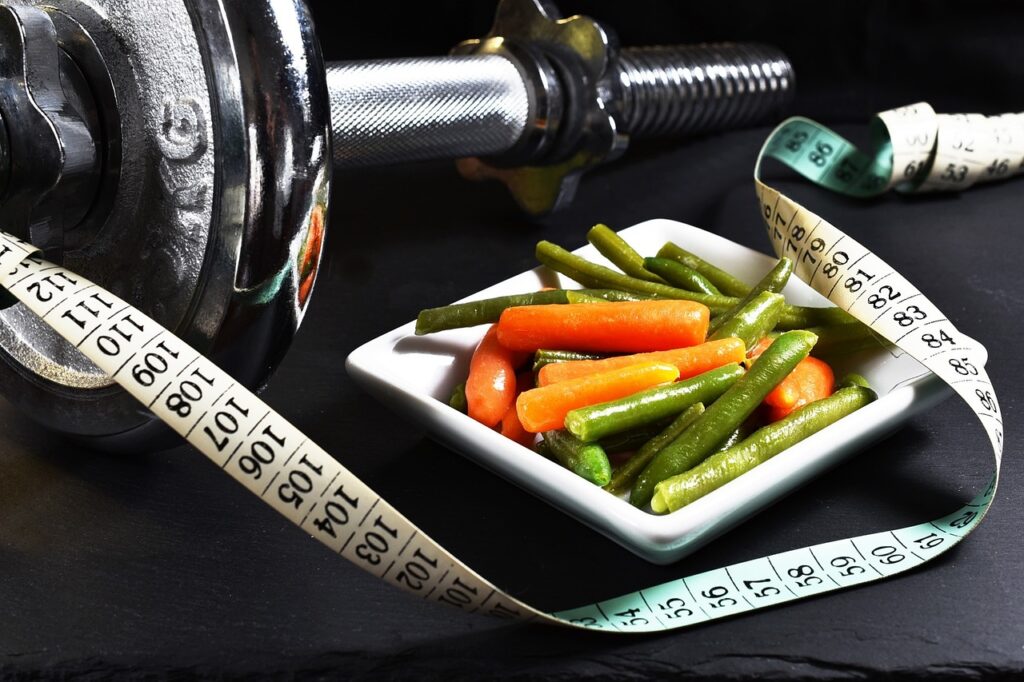
Losing weight can be a challenging task for many individuals. However, with the right fitness plan, it can become an achievable goal. A weight loss fitness plan is a program that combines physical exercise and healthy eating habits to help individuals lose weight and maintain a healthy lifestyle.
A weight loss fitness plan typically includes a variety of exercises that target different muscle groups in the body. These exercises can range from cardiovascular activities such as running, cycling, or swimming, to strength training exercises such as weightlifting or resistance training. The plan may also include flexibility and balance exercises such as yoga or Pilates.
In addition to physical exercise, a weight loss fitness plan also emphasizes healthy eating habits. This may include consuming a balanced diet that is rich in fruits, vegetables, lean proteins, and whole grains while limiting processed foods, sugary drinks, and high-fat foods. The plan may also include keeping track of calorie intake and portion sizes to ensure that individuals are consuming the appropriate amount of food for their weight loss goals.
Table of Contents
Understanding Weight Loss
The Science of Weight Loss
Losing weight is a simple concept: consume fewer calories than you burn. However, the science behind weight loss is much more complex than that. The body’s metabolism, hormones, and genetics all play a role in weight loss.
When the body consumes fewer calories than it burns, it begins to break down fat stores for energy. This process is called lipolysis. However, the body also has a natural defense mechanism against weight loss. When the body senses that it is losing weight, it slows down its metabolism to conserve energy. This makes it harder to continue losing weight over time.
Setting Realistic Goals
Setting realistic goals is an important part of any weight loss plan. It’s important to remember that weight loss is a gradual process and that it’s not healthy to lose too much weight too quickly.
A safe and sustainable rate of weight loss is 1-2 pounds per week. This can be achieved through a combination of diet and exercise. It’s important to find a balance between consuming enough calories to fuel the body and creating a calorie deficit for weight loss.
In addition to setting realistic weight loss goals, it’s also important to set non-weight related goals. This can include goals related to fitness, such as being able to run a certain distance or lift a certain weight. Focusing on non-weight related goals can help keep motivation high and make the weight loss journey more enjoyable.
Creating Your Fitness Plan
Assessing Your Fitness Level
Before starting a weight loss fitness plan, it is important to assess your current fitness level. This includes evaluating your physical health, strength, and endurance. A doctor or fitness professional can help you determine your fitness level and identify any potential health risks.
In addition to a physical assessment, it is important to consider your lifestyle and personal goals. This will help you determine the type of fitness plan that is right for you. For example, if you have a busy schedule, you may need a plan that is flexible and can be done at home.
Personalizing Your Approach
Once you have assessed your fitness level and identified your goals, it is time to personalize your fitness plan. This includes selecting exercises that target your problem areas and fit your fitness level. You may also want to consider incorporating activities that you enjoy, such as swimming or dancing.
It is important to set realistic goals and track your progress. This will help you stay motivated and make adjustments to your plan as needed. You can use a fitness tracker or journal to record your workouts and monitor your progress.
Remember, a weight loss fitness plan should be sustainable and enjoyable. By assessing your fitness level and personalizing your approach, you can create a plan that works for you and helps you achieve your goals.
Nutrition for Weight Loss
Macronutrients and Caloric Intake
To lose weight, it is important to consume fewer calories than the body burns. This can be achieved by reducing caloric intake through healthy eating habits and increasing physical activity. Macronutrients, such as carbohydrates, proteins, and fats, play a crucial role in providing energy and nutrients to the body.
It is recommended that individuals seeking weight loss consume a diet that is high in protein and low in carbohydrates and fats. This is because protein helps to build and maintain muscle mass, which in turn increases the body’s metabolism.
To determine the appropriate caloric intake for weight loss, individuals should calculate their basal metabolic rate (BMR) and adjust their caloric intake accordingly. This can be done using online calculators or by consulting a registered dietitian.
Healthy Eating Habits
In addition to monitoring caloric intake and macronutrient ratios, it is important to develop healthy eating habits. This includes consuming a variety of fruits, vegetables, whole grains, and lean proteins.
Additionally, individuals should aim to limit their intake of processed and high-fat foods, as well as sugary beverages. Drinking plenty of water is also important for weight loss, as it helps to flush toxins from the body and can help to reduce hunger.
Incorporating regular physical activity, such as cardiovascular exercise and strength training, into a weight loss fitness plan can also help to increase caloric burn and promote weight loss.
Exercise Essentials
Cardiovascular Training
Cardiovascular training, also known as cardio or aerobic exercise, is an essential component of any weight loss fitness plan. It involves activities that increase your heart rate and breathing, such as running, cycling, or swimming. Cardio workouts help burn calories, improve heart health, and boost endurance.
To get the most out of your cardio training, it’s important to choose activities that you enjoy and that challenge you. Aim for at least 150 minutes of moderate-intensity cardio exercise or 75 minutes of vigorous-intensity cardio exercise per week. You can break this up into shorter sessions throughout the day or week.
Strength Training
Strength training, also known as resistance training, is another crucial element of a weight loss fitness plan. It involves using weights, resistance bands, or bodyweight exercises to build muscle and increase strength. Strength training helps increase your metabolism, which means you’ll burn more calories even when you’re not exercising.
To get started with strength training, it’s important to learn proper form and technique to avoid injury. Start with lighter weights and gradually increase the weight as you get stronger. Aim for at least two strength training sessions per week, targeting all major muscle groups.
Flexibility and Mobility Work
Flexibility and mobility work is often overlooked in weight loss fitness plans, but it’s important for preventing injury and improving overall fitness. This type of exercise involves stretching and mobility exercises that improve range of motion and joint health.
Incorporate flexibility and mobility work into your fitness plan by including stretching exercises before and after workouts. You can also try yoga or Pilates classes, which focus on flexibility and mobility. Aim for at least 10 minutes of stretching or mobility work per day.
By incorporating cardiovascular training, strength training, and flexibility and mobility work into your weight loss fitness plan, you can achieve a well-rounded and effective workout routine. Remember to always listen to your body and consult with a healthcare professional before starting any new exercise program.
Tracking Progress
Monitoring Your Weight
One of the most effective ways to track progress in a weight loss fitness plan is by monitoring your weight. Weighing yourself regularly can help you stay motivated and on track. It’s important to remember that weight can fluctuate due to various factors such as water retention, so it’s best to weigh yourself at the same time of day, wearing similar clothing, and on the same scale.
Keeping a record of your weight can also help you identify patterns and see how your weight loss progress is trending over time. You can use a simple spreadsheet or a weight tracking app to log your weight and set goals for yourself.
Evaluating Fitness Improvements
In addition to monitoring weight, it’s important to evaluate fitness improvements. This can be done through various fitness assessments such as measuring your heart rate, endurance, and strength. Keeping track of these metrics can help you see improvements in your overall fitness level.
It’s important to note that progress in fitness may not always be visible on the scale. Building muscle can increase weight, but it can also improve body composition and overall health. Therefore, it’s important to use a variety of metrics to evaluate progress in a weight loss fitness plan.
Overall, tracking progress is an important component of a successful weight loss fitness plan. By monitoring weight and evaluating fitness improvements, individuals can stay motivated and on track towards achieving their goals.
Overcoming Plateaus
Adjusting Your Fitness Plan
When you hit a plateau in your weight loss journey, it’s time to adjust your fitness plan. This means changing up your exercise routine, increasing the intensity of your workouts, or trying a new type of exercise altogether. By challenging your body in new ways, you can jumpstart your weight loss and break through the plateau.
One way to adjust your fitness plan is to incorporate strength training. Building muscle can help boost your metabolism and burn more calories throughout the day. Try adding in some weightlifting exercises or bodyweight exercises like push-ups and squats to your routine.
Another way to adjust your fitness plan is to increase the intensity of your workouts. This can be done by adding more weight, increasing the speed or incline on a treadmill, or shortening your rest periods between sets. By pushing yourself harder during your workouts, you can burn more calories and break through your weight loss plateau.
Staying Motivated
Staying motivated is key to overcoming plateaus in your weight loss journey. One way to stay motivated is to set realistic goals for yourself. Instead of focusing on a specific number on the scale, set goals like running a 5K or doing a certain number of push-ups. By focusing on what your body can do, you’ll be more motivated to keep pushing yourself.
Another way to stay motivated is to find a workout buddy or join a fitness community. Having someone to exercise with can make workouts more enjoyable and hold you accountable. Joining a fitness community can also provide support and motivation from others who are on a similar journey.
By adjusting your fitness plan and staying motivated, you can overcome plateaus in your weight loss journey and continue to make progress towards your goals.
Recovery and Rest
Importance of Sleep
Getting enough sleep is crucial for weight loss and overall health. Lack of sleep can lead to an increase in appetite and cravings, which can make it harder to stick to a weight loss plan. It can also lead to hormonal imbalances that can affect metabolism and energy levels.
To ensure proper rest, it’s recommended to get at least 7-8 hours of sleep per night. Establishing a consistent sleep schedule and creating a relaxing bedtime routine can also help improve the quality of sleep.
Active Recovery
Rest days are important for allowing the body to recover and prevent injury, but that doesn’t mean being completely sedentary. Incorporating active recovery, such as light stretching or low-impact activities like swimming or yoga, can help improve circulation and reduce muscle soreness.
It’s important to listen to the body and not push too hard on rest days, but also not to completely neglect physical activity. Finding a balance between rest and active recovery can help improve overall fitness and weight loss progress.
Remember, recovery and rest are just as important as exercise and nutrition in achieving weight loss goals. By prioritizing sleep and incorporating active recovery, individuals can improve their overall health and wellness.
Maintaining Weight Loss
Long-Term Lifestyle Changes
Maintaining weight loss is a lifelong commitment that requires long-term lifestyle changes. It is important to continue following healthy eating habits and regular exercise routines even after achieving weight loss goals. This will help to prevent weight gain and maintain a healthy body weight.
One effective way to maintain weight loss is to make small, sustainable changes to daily habits. This can include choosing healthier food options, reducing portion sizes, and incorporating physical activity into daily routines. It is also important to stay hydrated and get enough sleep to support overall health and well-being.
Community and Support
Having a supportive community can also be helpful in maintaining weight loss. This can include friends, family members, or support groups. Joining a fitness class or group can also provide motivation and accountability for sticking to healthy habits.
It is important to remember that weight loss is not always a linear process and setbacks may occur. It is important to stay positive and continue making healthy choices. Celebrating small victories can also help to maintain motivation and encourage continued progress.
By making long-term lifestyle changes and seeking support from a community, individuals can successfully maintain weight loss and achieve overall health and wellness.
Frequently Asked Questions
What are the essential components of a workout plan for effective weight loss?
A workout plan for effective weight loss should include a combination of cardiovascular exercise, strength training, and flexibility exercises. It is also important to incorporate a healthy and balanced diet.
How can beginners design a fitness plan to achieve weight loss goals?
Beginners can start by setting realistic goals and gradually increasing the intensity and duration of their workouts. It is also important to consult with a fitness professional and create a plan that fits their individual needs and abilities.
What are the best exercises to include in a weight loss workout plan at home?
Some effective exercises to include in a weight loss workout plan at home include bodyweight exercises such as squats, lunges, push-ups, and planks, as well as cardio exercises such as jumping jacks, high knees, and burpees.
How often should I update my fitness plan to continue losing weight?
Fitness plans should be updated every 4-6 weeks to prevent plateauing and to continue making progress towards weight loss goals.
Can you suggest a weekly workout routine for females aiming to lose weight?
A weekly workout routine for females aiming to lose weight could include 3-4 days of strength training and 2-3 days of cardio, with rest days in between. It is important to consult with a fitness professional to create a plan that fits individual needs and goals.
What strategies can be employed to enhance the effectiveness of a workout plan for weight loss?
Some strategies to enhance the effectiveness of a workout plan for weight loss include setting realistic goals, tracking progress, varying the intensity and type of exercises, and incorporating healthy eating habits. It is also important to stay consistent and motivated.

